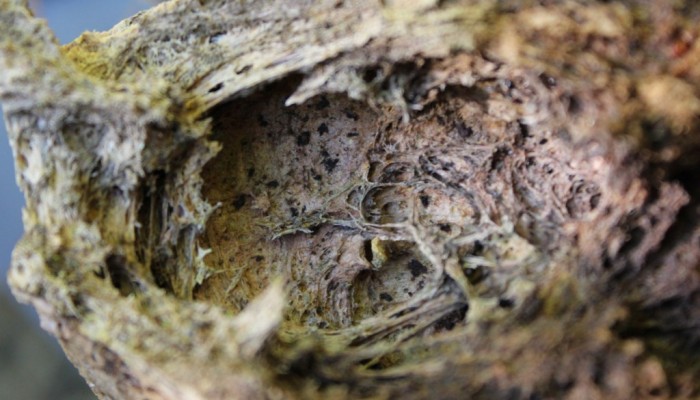One of the most rewarding parts of fieldwork on volcanoes is when the parts start to fit together, and hunches turn into firmer ideas. When piecing together ancient volcanic eruptions, the process often starts with the discovery of the trace of a new deposit in a road cut section. This might be something as simple as the appearance of a scruffy yellow or orange band that catches our eye as we pass ...[Read More]
Geology for Global Development
Friday Photo (62): Active Geology – Smoke from Mt Etna
For our first Friday photo of 2013, we have this incredible image of a smoking volcano, taken during field work at Mt Etna, Sicily. The tripod in the foreground is monitoring the composition of the volcanic gases. Credit: Robin Wylie (c) Geology for Global Development
Green Tea and Velociraptors
Plan of action!
Crikey, it’s been 3 months already?! *panics* At Imperial College, new PhD students have to produce an initial plan of study within the first three months of setting off, and submit it for independent assessment. Having uploaded mine just now (not in the slightest bit late..), I figured I’d share it here! It’s a broad outline of what I’m aiming to do for the next wad of mon ...[Read More]
VolcanicDegassing
Field report: beware of the sealions
Beware of the sealions (‘cuidado lobos marinos’) declares the sign at Valdivia fish market, which stretches along the docks in this southern Chilean city. And it’s no joke either, as a large clan of these creatures has set up stall in the estuary beneath the fish market, ready to feast on the daily pickings cast over the sea rail. We are not here, however, to admire the sealife; or to ...[Read More]
Geology for Global Development
Conference: Geophysics in Future Energy Challenges
The British Geophysical Association is hosting a two day conference on the 14th and 15th of February, 2013. The focus of the conference will be the use of geophysics in future energy challenges. Novel geophysical techniques will be needed to maximise output from conventional reserves and safely explore unconventional reserves. Once the deep reserves are depleted, the empty pore spaces in the rock ...[Read More]
GeoSphere
Geology Photo of the Week #17 – Jan 6-12
Happy New Year everyone! I hope that you all had relaxing and enjoyable holidays. I sure did. It is time to start off the new year with the 17th edition of the photo of the week. Here in Ottawa it is a balmy -19 degC with the wind chill making it feel like -28 degC right now! Happily I am toasty and warm inside…for now. If you’re curious the coldest place in Canada at the moment is Eur ...[Read More]
Geology for Global Development
Natural Resources: A Natural Hazard?
In this post I explore some of the issues that can arise when an economy is dominated by the oil or mining industry. I discuss some of the inherent problems with the nature of the extraction industry. In next week’s blog post, I will move on to talking about how we can manage the extraction industry responsibly. Although I manage the GfGD Blog, in this instance I am blogging in a personal ca ...[Read More]
Green Tea and Velociraptors
Virtual Palaeontology – taking science communication to the next level
I recently wrote a small series about how geoscientists can become more effective communicators of scientific knowledge to the general public, and the pitfalls and issues associated with this. The overall strategy revolved around using the right type of language, along with a context and narrative to create relevant stories, but above all this, to just go out there and do it! That’s exactly what I ...[Read More]
Geology for Global Development
A Christmas Message from GfGD
We will be taking a break from blogging until the New Year, and we wanted to take this chance to wish all of our readers a very merry Christmas. In 2012 we ran our first blog competition, expanded our university group network, organised our first GfGD placement, established a national committee and re-housed our blog within the EGU Blog network. Joel Gill, GfGD Director, wishes to end 2012 with a ...[Read More]
GeoSphere
Geology Photo of the Week # 16 – Dec 16-22
It’s photo of the week time! I hope you’re excited…I am! There has been a lot of consternation in the twitterverse and geoscience community lately about the true identity of the Ediacaran biota, particularly the little guy pictured below. The abstract can be found here. The basic proposal is that the Ediacaran fossils are not marine, but rather are actually lichen. Bonus photo of ...[Read More]

